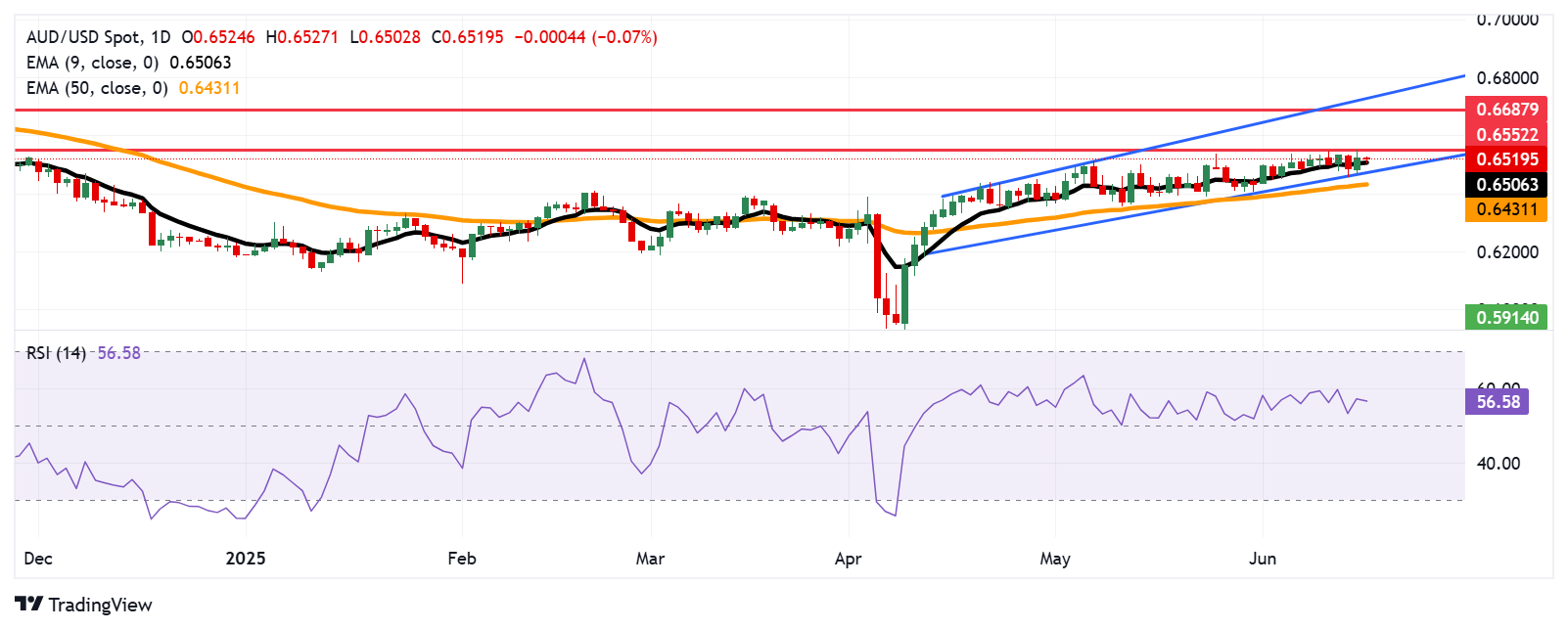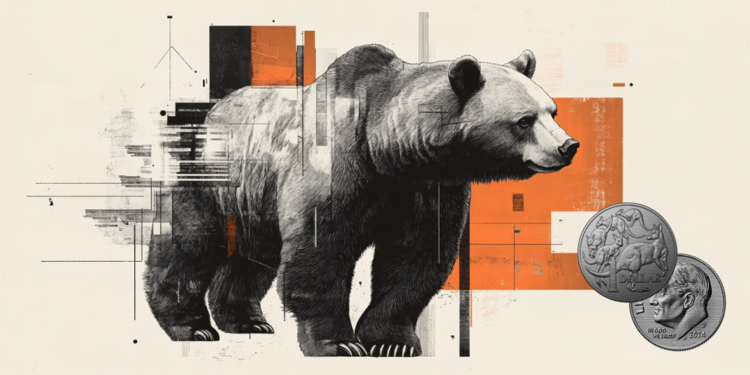The Australian Dollar (AUD) recovers its daily losses against the US Dollar (USD) on Tuesday. However, the AUD/USD pair faced challenges as traders adopted caution amid ongoing geopolitical tensions.
However, the risk-sensitive AUD/USD pair gained ground due to optimism after Iran reportedly asked many countries, including Oman, Qatar, and Saudi Arabia, to urge US President Donald Trump to use his influence on Israel for an immediate ceasefire, per Reuters. Moreover, risk sentiment improved as the Canadian Prime Minister Mark Carney had agreed with Trump that their two nations should try to wrap up a deal on tariffs within 30 days.
G7 leaders issue a statement, “We have been consistently clear that Iran can never have a nuclear weapon.” They highlighted that resolving the crisis can lead to broader de-escalation of hostilities in the region.
Traders await Australia’s upcoming labor data this week, including Employment Change and Unemployment Rate, which are expected to offer fresh impetus on the strength of the domestic economy and shape expectations for the Reserve Bank of Australia’s (RBA) policy outlook.
Australian Dollar declines as US Dollar edges higher due to risk aversionThe US Dollar Index (DXY), which measures the value of the US Dollar against six major currencies, is trading higher at around 98.20 at the time of writing. The US Retail Sales data for May will be eyed on Tuesday. The focus will shift to the Federal Reserve’s (Fed) interest rate decision, due on Wednesday.On Monday, President Trump called for the evacuation of Iran’s capital, Tehran, hours after urging the country’s leaders to accept a deal to limit its nuclear program, as Israel hinted that attacks would continue, per Bloomberg.Trump posted in a social media post, “What a shame, and a waste of human life. Simply stated, IRAN CAN NOT HAVE A NUCLEAR WEAPON. I said it over and over again! Everyone should immediately evacuate Tehran. Iran should have signed the ‘deal’ I told them to sign.”The University of Michigan (UoM) reported on Friday that the Consumer Sentiment Index climbed to 60.5 in June from 52.2 prior. This reading came in above the market consensus of 53.5.The US Producer Price Index (PPI) climbed 0.1% month-over-month in May, compared to a decline of 0.2% (revised from -0.5%). This reading came in softer than the expected 0.2% rise. Meanwhile, the core PPI, excluding food and energy, increased 0.1% MoM in May versus -0.2% prior (revised from -0.4%), below the consensus of 0.3%.The US Federal Reserve (Fed) is expected to keep its policy rate unchanged within the 4.25%–4.50% range in its upcoming decision on Wednesday. Traders now expect a 25 basis point rate cut by September.Reuters reported Thursday that President Trump expanded steel tariffs starting June 23 on imported “steel derivative products,” including household appliances, such as dishwashers, washing machines, refrigerators, etc. The tariffs were initially imposed at 25% in March and later doubled to 50% for most countries. This is the second time the scope of affected products has been expanded.China Retail Sales rose 6.4% year-over-year in May, surpassing the 5.0% expected and April’s 5.1% increase. Meanwhile, Industrial Production increased 5.8% YoY, but came in below the 5.9% forecast and 6.1% prior.Moreover, the National Bureau of Statistics (NBS) in China noted that the domestic economy is expected to have remained generally stable for the first half (H1) of 2025. However, economic growth in China may struggle since the second quarter due to uncertain trade policies.Australian Dollar falls to near nine-day EMA, tests 0.6500
AUD/USD is trading around 0.6510 on Tuesday. The bullish bias prevails, as the daily chart’s technical analysis indicates that the pair remains within the ascending channel. Moreover, the 14-day Relative Strength Index (RSI) remains above the 50 mark, suggesting a prevailing bullish outlook. Additionally, the pair is positioned above the nine-day Exponential Moving Average (EMA), indicating that short-term price momentum is stronger.
The pair may target the fresh seven-month high of 0.6552, which was reached on June 16. A break above this level could support the pair to target the eight-month high at 0.6687, followed by the upper boundary of the ascending channel around 0.6730.
On the downside, the AUD/USD pair may test the nine-day EMA at 0.6506, followed by the ascending channel’s lower boundary around 0.6470. A break below the channel would indicate the weakening of the bullish bias and put downward pressure on the pair to test the 50-day EMA at 0.6431.
AUD/USD: Daily Chart
The table below shows the percentage change of Australian Dollar (AUD) against listed major currencies today. Australian Dollar was the strongest against the Canadian Dollar.
USD
EUR
GBP
JPY
CAD
AUD
NZD
CHF
USD
0.00%
0.00%
-0.12%
0.03%
-0.09%
-0.18%
-0.04%
EUR
-0.00%
-0.02%
-0.10%
0.00%
-0.06%
-0.10%
-0.06%
GBP
-0.01%
0.02%
-0.14%
0.03%
-0.04%
-0.13%
-0.04%
JPY
0.12%
0.10%
0.14%
0.14%
0.02%
-0.07%
0.05%
CAD
-0.03%
-0.01%
-0.03%
-0.14%
-0.18%
-0.13%
-0.07%
AUD
0.09%
0.06%
0.04%
-0.02%
0.18%
-0.06%
-0.00%
NZD
0.18%
0.10%
0.13%
0.07%
0.13%
0.06%
0.06%
CHF
0.04%
0.06%
0.04%
-0.05%
0.07%
0.00%
-0.06%
The heat map shows percentage changes of major currencies against each other. The base currency is picked from the left column, while the quote currency is picked from the top row. For example, if you pick the Australian Dollar from the left column and move along the horizontal line to the US Dollar, the percentage change displayed in the box will represent AUD (base)/USD (quote).
In the world of financial jargon the two widely used terms “risk-on” and “risk off” refer to the level of risk that investors are willing to stomach during the period referenced. In a “risk-on” market, investors are optimistic about the future and more willing to buy risky assets. In a “risk-off” market investors start to ‘play it safe’ because they are worried about the future, and therefore buy less risky assets that are more certain of bringing a return, even if it is relatively modest.
Typically, during periods of “risk-on”, stock markets will rise, most commodities – except Gold – will also gain in value, since they benefit from a positive growth outlook. The currencies of nations that are heavy commodity exporters strengthen because of increased demand, and Cryptocurrencies rise. In a “risk-off” market, Bonds go up – especially major government Bonds – Gold shines, and safe-haven currencies such as the Japanese Yen, Swiss Franc and US Dollar all benefit.
The Australian Dollar (AUD), the Canadian Dollar (CAD), the New Zealand Dollar (NZD) and minor FX like the Ruble (RUB) and the South African Rand (ZAR), all tend to rise in markets that are “risk-on”. This is because the economies of these currencies are heavily reliant on commodity exports for growth, and commodities tend to rise in price during risk-on periods. This is because investors foresee greater demand for raw materials in the future due to heightened economic activity.
The major currencies that tend to rise during periods of “risk-off” are the US Dollar (USD), the Japanese Yen (JPY) and the Swiss Franc (CHF). The US Dollar, because it is the world’s reserve currency, and because in times of crisis investors buy US government debt, which is seen as safe because the largest economy in the world is unlikely to default. The Yen, from increased demand for Japanese government bonds, because a high proportion are held by domestic investors who are unlikely to dump them – even in a crisis. The Swiss Franc, because strict Swiss banking laws offer investors enhanced capital protection.
